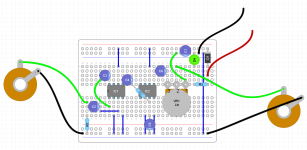V : Voltage
Va : used to indicate an internal analogue voltage point.
Va alt : anode voltage; Usually seen alongside Vg : grid voltage (now gate voltage) and Vk : cathode voltage. Usually on older (MUCH older circuits! with tubes) but you sometimes see Va,Vk on diodes, e.g. photodiodes
Vb : Voltage Base (maybe, I’m guessing here)
Vbe : Voltage Base Emitter — voltage between the base and emitter of a BJT
Vc : Collector voltage for a BJT, similarly Ve, Vb may also be used for the emitter and base while Vs, Vd and Vg may be used for the source, drain and gate of FETs. Vc as the actual voltage at the collector
Vcc : VOLTAGE COMMON COLLECTOR positive power supply for many IC's, traditionally this referred to BJT based ICs, the 'cc' referring to the collectors of the integrated transistors. Often this was matched with a negative supply,
Vee ('ee' referring to the emitters of the transistors). Vcc is for BJT circuits (c = collector)
Vcc defined as the collector supply voltage (Vc as the actual voltage at the collector).
Vd : Actual voltage at the Drain
Vdd : positive power supply for many IC's, traditionally this referred to FET (NMOS, PMOS, CMOS) based ICs, the 'dd' referring to the drains of the integrated FETs. Often this was matched with a negative supply, Vss ('ss' referring to the sources of the FETs). Vdd is for FET circuits (d = drain)
Vee : negative supply of BJT-based IC, ‘ee' referring to the emitters of the BJT transistors within IC.
Vf : is used to indicate the forward voltage drop of the diode.
Vg :
Vhsys : may be used for the hysteresis voltage of a comparator type circuit.
Vi : input voltage.
Vref :
Voltage reference, a precision device designed to maintain an accurate, low noise, constant output voltage. Ideally, the output should remain constant even as parameters, such as ambient temperature, supply voltage, or the load current change.
A voltage reference is a precision device specifically designed to maintain a constant output voltage, even as parameters such as ambient temperature or supply voltage change. The precision of a voltage reference enables its use in several different types of applications beyond a data converter.
Vs : Actual voltage at the Source
Vss : Corresponding negative supply to Vdd, “S” = source.
Vt : May be used for the Thevenin equivalent voltage, or as suggested by WhatRoughBeast the threshold voltage (for a comparator or similar for example), or the termination voltage (also known as Vtt in the case of DDR=type memories).
Vt alt : Voltage threshold
Vo : Output voltage for op-amps and the like.
Vp : peak voltage (again, for AC) referenced to system ground, or 0V. May also be used for pull-up voltages (which could also be Vpu).
Vpp : peak-to-peak voltage (for AC waveforms), historically this would also be used for the programming voltage for EEPROM or flash memory (particularly those devices that did not generate their own programming voltage on-chip).
Vr : reverse voltage, particularly when referenced to diodes. You may also encounter Vz used to indicate a zener voltage (see above).
0V : Zero-volts, not to be confused with Vo, refers to the system ground. Also,


